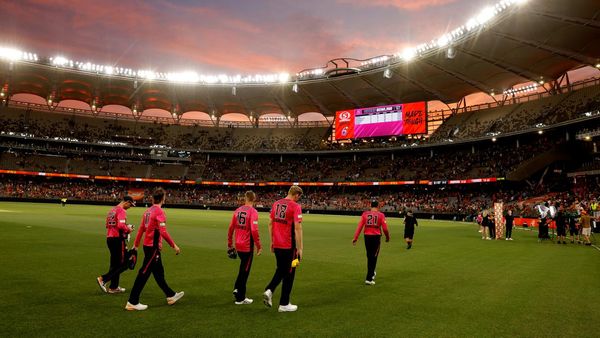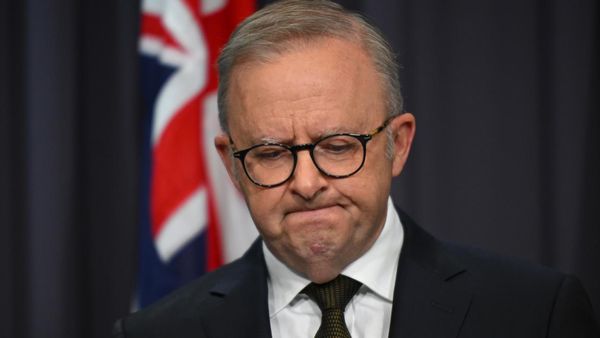With the firehose of news surrounding KTM over the past year, it's not difficult to understand how some things grab the headlines, and other things seemingly slip by unnoticed. But the fact is, since one of India's largest motorcycle and automotive manufacturers, Bajaj Auto, stepped in to rescue KTM, there are considerably more chefs in the kitchen.
And so, while KTM's current CEO, Gottfried Neumeister, might have certain things to say, it's not only his words that should be taken seriously.
Over in India, Bajaj Auto CEO Rajiv Bajaj is well-known for frequently appearing on the nation's business news TV network, CNBC-TV18. Seriously, if you scroll back through either the media outlet's website or its YouTube channel (or both), you can find countless exclusive interviews with Bajaj (the man) over the years, about all manner of topics to do with Bajaj Auto.
One such appearance in August saw Rajiv Bajaj offering some pointed words about what needs to happen to turn KTM around, and it's almost guaranteed that some people aren't going to like what he has to say. And yet, I'll point out again, these are the words of Rajiv Bajaj himself; they are neither baseless rumors, nor are they speculation.
For those who are just catching up to this mega-saga now, Bajaj Auto has invested over 800 million Euros in total (that's including the most recent cash infusion loan it took out expressly for the purposes of saving KTM from itself in May 2025) into KTM. So when Bajaj Auto CEO Rajiv Bajaj offers up compliments, criticism, or strategic pronouncements, they should carry a pretty significant weight in our minds.
One thing that Bajaj told CNBC-TV18's Parikshit Luthra is that the motorcycle industry, as he sees it, is really two industries. The first consists of volume-sellers, which includes basically every brand that makes large numbers of the small-displacement (think 350cc and under) machines that keep most of the world (apart from the US and Canada) running.
This includes brands like Honda, Yamaha, Royal Enfield, TVS, and Bajaj, which sell in much larger volumes across Asia, Europe, and South America than the second part of the motorcycle industry. The second part consists of the more premium lifestyle brands, including OEMS like Harley-Davidson, Triumph, Ducati, and KTM. And while some brands like Honda and Yamaha maintain footholds in both segments, many others have primarily stayed on one or the other side of this dividing line.
Now, while the name Bajaj is primarily associated with two-wheelers in the first segment, it has also quietly worked on partnerships with premium lifestyle brands including Triumph and KTM for years.
This strategy, as we've seen with the massive success of both Triumph's 400 range and KTM's 390s, has been incredibly successful for Bajaj so far. And it only looks to continue reaping massive benefits as the company expands its reach through its newly-gained controlling interest in KTM worldwide.
In his discussion, Rajiv Bajaj talked about a recent meeting with KTM's senior management, where he said they discussed a future strategy for KTM that rests on two specific thoughts. Here's where it gets interesting if you're looking to see what KTM's future might look like.
"First, we have to restore the [KTM] brand. As unfortunately happens sometimes with success, you tend to diffuse the brand by extending it into too many categories, too many segments; even beyond the core segment. And the second thing that brand diffusion leads to is this proliferation of SKUs [stock keeping units] that makes the business very complex, right from R&D to the dealer workshop, you know? So, in my opinion, we have to restore the brand to the core. And from that will follow a great simplification of the operations, which will have a very salutary affect on the company," Bajaj began.
He then continued, "The second thing we have to do is reset the cost. To put it very simply and bluntly, European manufacturing is dead. I think the auto industry, including the car industry, understands that."
"Now, they would have political, social, and other compulsions why they cannot move everything out of Europe to somewhere in Asia to produce more competitively. But let me give you an example, of Triumph. Mr. Bloor moved 100% of Triumph production [Ed. note fact-check: Not including the limited-edition TFC models, so not quite 100% but very close.] to Thailand over 15 years ago." [Ed. note again: Triumph started moving its production to Thailand in the early 2010s, but did not completely shift the majority of its production away from Hinckley until 2020.]
"Every single Triumph motorcycle that is made today is made either in Thailand, or of course, more recently, in India. If Triumph can do this 15 years back, in principle, why not KTM?" Bajaj asked.
He continued, "We have never shared this specifically before, but let me tell you that while KTM struggles in Europe, the KTMs that we make and export out of India to different parts of the world bring us an EBITDA margin of over 30%. The main reason for that is the great cost competitiveness that India and the Indian supply chain and our excellent suppliers offer."
"So, we have to reset the cost of KTM. We have to restore the brand, and if we are able to do this effectively, then I think KTM has a very bright future."
Bajaj then went on to speak about the most recent state of KTM exports, which he sees possibly hitting a new high "subject to the Trump tariffs." After that, he talks about Bajaj's upcoming plans for a twin-cylinder engine that the company has been teasing for a few years now, that he says is probably at least a year away but will be bigger than any current Bajaj or Bajaj-made KTM bike that currently exists, in terms of its displacement.
Also, in non-KTM news, around October, Bajaj says that a Triumph Tracker should also be coming to market. This should be the next 400cc bike in the lineup after the recent introduction of the Thruxton 400.








